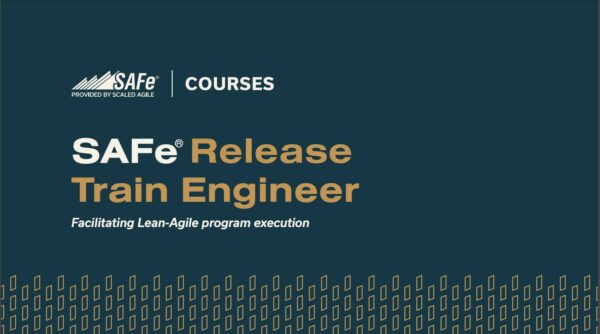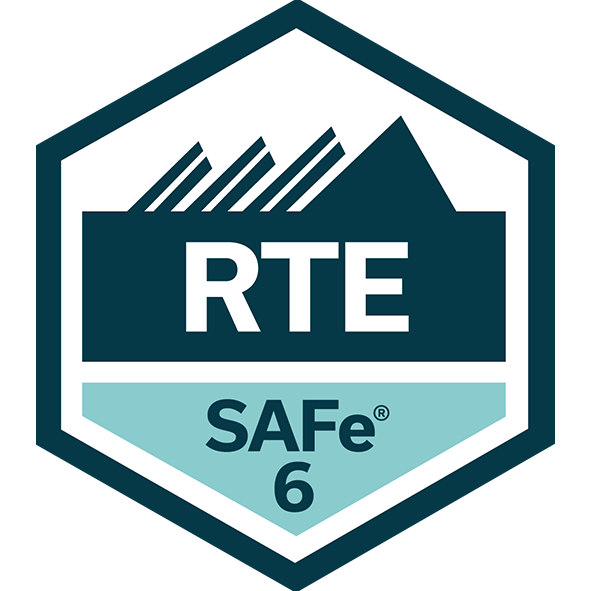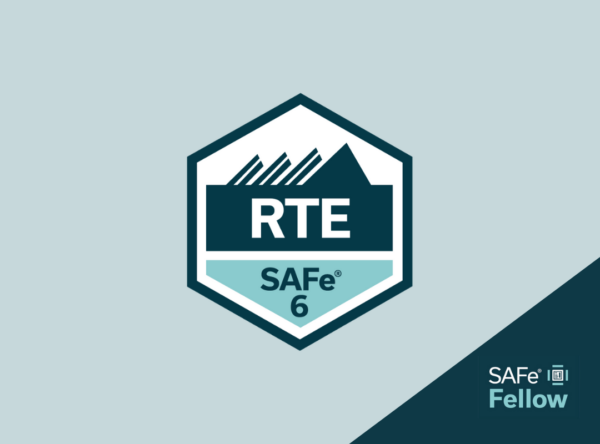SAFe® is distinguished by its use of a Release Train Engineer (RTE), who is one of the three leaders alongside product managers and system architects. The RTE plays a crucial role in guiding Agile Release Trains (ARTs) to deliver value, requiring the creation of a conducive environment, the facilitation of appropriate conversations and meetings, and the assembly of the right team members to make data-driven decisions.
By enrolling in the SAFe® RTE course, you will gain the skills to effectively implement SAFe practices and enhance PI Planning and other significant SAFe events. You will also learn how to coach leaders, teams, and Scrum Masters in adopting new processes and mindsets. Additionally, you will be equipped with the necessary tools and guidance to thrive in remote settings with dispersed teams.
Course Outline
Day 1
- Exploring the RTE Role and Responsibilities
- Applying SAFe Principles
- Organizing the ART
Day 2
- Planning a PI
- Executing a PI
Day 3
- Fostering Relentless Improvement
- Serving the ART
- Continue Your Learning Journey
- Practicing SAFe

SAFe Release Train Engineer attendees typically include
- RTEs and Solution Train Engineers (STEs)
- Program and project managers
- Scrum Masters
- Leaders and managers
- Agile coaches
- SAFe Practice Consultants (SPCs)
What’s included
- Course materials
- Remote learning via SAFe® Virtual Classrooms
- One-year membership to the SAFe® Community Platform
- SAFe Release Train Engineer (RTE) Certification Exam
Download now your Release Train Engineer brochure!
Get your brochure!
Upcoming SAFe Release Train Engineer Certification Course
Release Train Engineer Details
Release Train Engineer: The Conductor of the Agile Release Train
Release Train Engineers (RTEs) are the unsung heroes of the Agile world. They are responsible for coordinating the work of multiple teams within an Agile Release Train (ART) to ensure that all of the teams are aligned and working towards the same goals. RTEs also work with stakeholders to manage expectations and ensure that the ART is delivering the right products, solutions or services within the Development Value Stream.
What is an Agile Release Train (ART)?
An ART is a group of teams that work together to deliver a product or service. ARTs are typically used in organizations where 50+ individuals are working on the product or service together or start-ups that will grow into such a size quickly.
What is a Release Train Engineer?
An RTE is a servant leader who is responsible for the success of an ART. RTEs work with Product Management and System Architects to create and manage a shared backlog of work, identify and manage dependencies driven by the teams, communicate with stakeholders, and drive continuous improvement and the DevOps pipeline.
Why are Release Train Engineers important?
RTEs are important because they help to ensure that ARTs are successful. ARTs can be complex and challenging, and RTEs play a critical role in helping teams to stay aligned and on track. RTEs also help to reduce the risk of failure and to improve stakeholder satisfaction.
What does a Release Train Engineer do?
RTEs have a wide range of responsibilities, but some of the most important include:
- Coordinating the work of multiple teams: RTEs work with the teams in their ART to create and manage a shared backlog of work. They also help to ensure that the teams are communicating and collaborating effectively.
- Managing dependencies: RTEs work with the teams in their ART to identify and manage dependencies between teams. This helps to ensure that the teams are able to work efficiently and predictable.
- Communicating with stakeholders: RTEs communicate with stakeholders throughout the ART to keep them updated on the progress of the ART and to manage their expectations. This helps to ensure that the ART is delivering the products and features that the stakeholders need and want.
- Driving continuous improvement: RTEs work with the teams in their ART to identify and implement continuous improvement initiatives. This helps to ensure that the ART is constantly improving its performance.
What are the benefits of having a Release Train Engineer?
There are many benefits to having an RTE on an ART. Some of the most notable benefits include:
- Improved coordination and collaboration: RTEs help to improve the coordination and collaboration between teams within an ART. This leads to more efficient work and better results.
- Reduced risk: RTEs help to reduce the risk of failure by identifying and managing dependencies and by ensuring that the ART is aligned with the overall business goals.
- Improved stakeholder satisfaction: RTEs help to improve stakeholder satisfaction by keeping them updated on the progress of the ART and by managing their expectations.
- Continuous improvement: RTEs work with the teams in their ART to identify and implement continuous improvement initiatives. This helps to ensure that the ART is constantly improving its performance.
How to become a Release Train Engineer
There is no one-size-fits-all path to becoming an RTE. However, some common steps include:
- Gaining experience as a Scrum Master or Team Coach: RTEs should have a strong understanding of Agile principles and practices. They should also have experience working with multiple teams and managing complex initiatives.
- Getting certified: Getting trained and certified can help to gain additional skills and knowledge that will help in the daily work.
- Networking with other RTEs: Networking with other RTEs is a great way to learn more about the role and share experience.
Release Train Engineer FAQ’s
What is a Release Train Engineer vs a Scrum Master?
The SAFe Scrum Master or Team Coach is the facilitator of a team with up to 10 members. The Release Train Engineer is the faciliator of an ART (Agile Release Train) which is a Team of Agile Teams that is working on the same product or service. Release Train Engineer and Scrum Master / Team Coach are collaborating very closely.
What is the difference between a PM and RTE?
PM or Product Management is focusing on the WHY and WHAT the Agile Release Train (ART) is building while the Release Train Engineer (RTE) is facilitating the HOW and removing impediments from the track of the ART.
How much does a Release Train Engineer certification cost?
The 3 Days SAFe Release Train Engineer Training with RTE Certification is USD 2695. Make sure you pick the right trainer. An experience SAFe Practice Consultant Trainer or a SAFe Fellow can make a difference in your experience as well as the impact you will have after the training.



